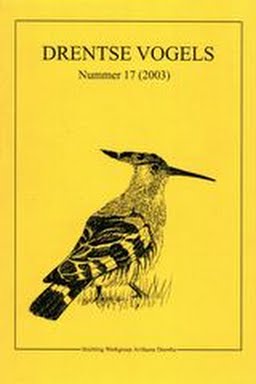2003
Zingende Bosruiters Tringa glareola in het Fochteloërveen
Publication
Publication
Drentse vogels , Volume 17 - Issue 1 p. 41- 45
The Fochtelogrveen is a 2000 ha peat-moor relic at the border of Friesland and Drenthe. In 1997 the area was subdivided into compartments, to retain the water and raise the water level. Flooded vegetation and mud banks, resulting from large scale digging activities with heavy machinery, attracted many waders, among which Wood Sandpipers. The numbers of this species increased after 1997, especially in June through August (Table I). In 1992-96 there was a distinct period of absence between spring (up to mid-May) and summer presence (from late June)(Table 2). From 1997 onwards. Wood Sandpipers were also regularly observed in the intermediate period. At the same time, displaying birds were more often recorded. On 1 July 2003, an alarming bird was briefly observed. However, there was no proof of breeding. Probably, the attractiveness of the Fochtelogrveen for Wood Sandpapers is short-lived, because its preferred habitat – muddy areas with a dynamic water level – is a pioneer stage following intensive digging activities. This type of human interference will be abandoned in the near future, with habitat succession as a consequence. Besides, the extinction of the species as a breeding bird in The Netherlands (1936) and in Germany (1973), and the decline in Denmark during the last few decades, make resettlement of Wood Sandpipers in The Netherlands an unlikely scenario
| Additional Metadata | |
|---|---|
| Drentse vogels | |
| CC BY 3.0 NL ("Naamsvermelding") | |
| Organisation | Werkgroep Avifauna Drenthe |
|
Herman Feenstra. (2003). Zingende Bosruiters Tringa glareola in het Fochteloërveen. Drentse vogels, 17(1), 41–45. |
|
